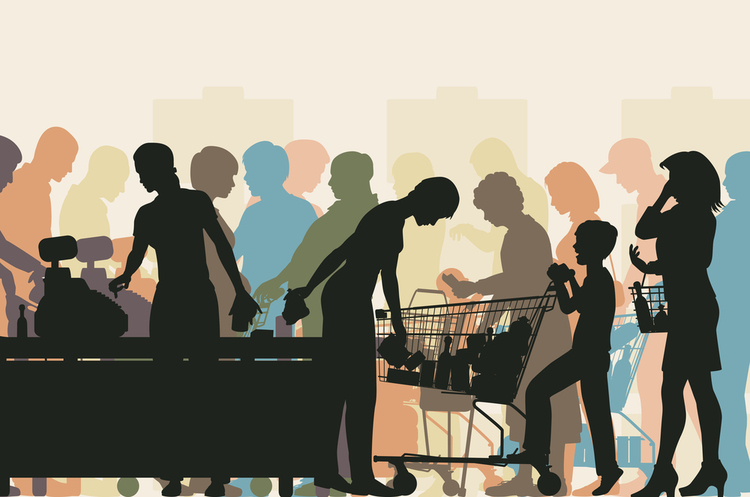How food retail coped with the tide of "missile" excitement
And whether it makes sense to stock up on food
Yesterday, Kyiv and other shelled Ukrainian cities saw a partial "reincarnation" of 24 February. In total, on 10 October, Russia fired 87 missiles and 24 drones at Ukraine. Most of them were shot down by Ukrainian air defence, but the massive shelling killed 14 people and injured almost 100 in the capital alone. Besides satisfying the domestic Russian recipient, the target of the attack were critical infrastructure facilities. They were hit in 20 settlements. 45 residential buildings, 6 educational institutions, 2 social service institutions, 6 cultural institutions, 5 healthcare institutions, 2 administrative buildings were damaged to varying degrees in Kyiv, according to the Kyiv City State Administration. 5 objects of critical infrastructure and housing and communal services of the capital were also damaged, resulting in partial cutdown of power supply.
This was the largest Russian attack on Ukraine since 24 February. Since it was deprived of the status of the first, apart from understandable precautions, the shelling did not cause serious mass movements among the population. Thus, there were no visible migrations either to Western Ukraine or to the suburbs. The only thing that coincided – albeit on a smaller scale since 24 February – was consumer behaviour.
After a record-breaking long air-raid alarm lasting more than five hours and during which retail infrastructure was shut down according to protocol, retailers saw a surge in feverish demand. At the first opportunity, consumers began to stock up.
According to the survey conducted by the Mind author, the average cheque differed at least twice from the everyday one and contained classic "panic" products: cereals, sunflower oil, salt, pasta, toilet paper. Plus chicken eggs, which began to be in high demand in a burst of rising prices for them a few days before the attack. Queues were also seen at fuel stations.
"Please do not do anything stupid at fuel stations and at cash desks at shops. Everything is enough and will be enough," wrote MP Maryan Zablotsky, but not everyone heeded this laudable call.
The rush has several reasons, including objective ones. First of all, since food stores were not available for a long time, all the demand, traditional for this period, gathered in one place after they were opened. By the evening, the number of visitors did not exceed the average, although volumes of purchases were still significantly higher than usual.
The factor of the sudden attack, the uncertainty about its duration and the need to form a full reserve to minimise following exits from the shelter made people buy more than usual.
The factor of "attack from Belarus". On 10 October, President of Belarus Aliaxandr Lukashenka officially confirmed that he had reached an agreement with Vladimir Putin on the deployment of a joint regional military force. In case of the eventual resumption of hostilities in the Kyiv Oblast – which did not happen – the supply of food could have been disrupted, as it was after 24 February.
The excitement lasted less than a day. It drowned in an obviously excessive supply of goods in retail chains after a few hours.
According to the Silpo chain (Fozzy Group), after the 10 October morning attacks, 85% of Silpo stores resumed their work, except for some stores mainly in Lviv and Kharkiv due to power cuts.
"So far, there are sufficient stocks of all classes of products in the stores, and even more in our warehouses. We have already a plan A and plan B for the delivery of products to Silpo in the coming days. That is, we will do everything to keep the goods on the shelves for you," the company said.
Power cuts have led to the need for savings and planned disconnection of some industrial consumers, but food producers have priority access. There were also no serious restrictions on logistics.
And given the prompt recovery of power infrastructure and normal operation of all critical enterprises, the surge in food demand was most likely a one-time event.
If you have read this article to the end, we hope that means it was useful for you.
We work to ensure that our journalistic and analytical work is of high quality, and we strive to perform it as competently as possible. This also requires financial independence. Support us for only UAH 196 per month.
Become a Mind subscriber for just USD 5 per month and support the development of independent business journalism!
You can unsubscribe at any time in your LIQPAY account or by sending us an email: [email protected]



